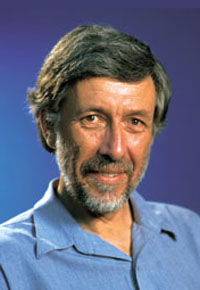|
|
|
|
|
|
|
News & Views item - December 2008 |
![]() CSIRO's Dr Michael Raupach Assesses that 5% 2020 Goal. (December 20,
2008)
CSIRO's Dr Michael Raupach Assesses that 5% 2020 Goal. (December 20,
2008)
 Dr Michael Raupach of CSIRO's Marine and Atmospheric Research is a contributing
author to reports by the IPCC (Intergovernmental Panel on Climate Change) and
chair of the Global Carbon Project.
Dr Michael Raupach of CSIRO's Marine and Atmospheric Research is a contributing
author to reports by the IPCC (Intergovernmental Panel on Climate Change) and
chair of the Global Carbon Project.
Using data published last year by the IPCC he has assessed the 2020 CO2 equivalents reduction goal proposed by Prime Minister Kevin Rudd.
It would be enough to stabilise the atmospheric concentration of greenhouse gases at the upper range of 445-490 parts per million of CO2 equivalents with this stringent caveat -- all nations would need to abide to the 5% reduction by 2020.
But even then Dr Raupach told the ABC's Anna Salleh: "That's the lowest realistic trajectory that the IPCC has spoken about, and even that lowest realistic trajectory carries climate risks," because at this level of greenhouse gas stabilisation, temperatures will still rise between 1.5º C to 3º C.
And the estimated rise in sea level? At least one metre.
Dr Raupach sees a global cut of around 5% by 2020 as the absolute minimum required to avert catastrophic global climate change.
However in his view "the developing countries have no way of meeting a 5% global target. Therefore, as is already widely accepted, the developed nation's have to cut deeper. "The huge argument is by how much."
Putting the matter in simple terms: "If developing nations increase their emissions by 30% through [2020], a 30% reduction in developed nations would see the world as a whole come to 2020 with the same emissions as in 2000; it's all in trade-offs at the moment."
Finally, climate change economist Dr Frank Jotzo, an adviser to the Garnaut Climate Change Review, told Ms Salleh that ruling out greater reductions [than 15%] by 2020 is a mistake. "Australia's per capita emissions levels are double that of Europe and four times the world average. That means Australia's fair share is to cut faster than others, in per capita terms."